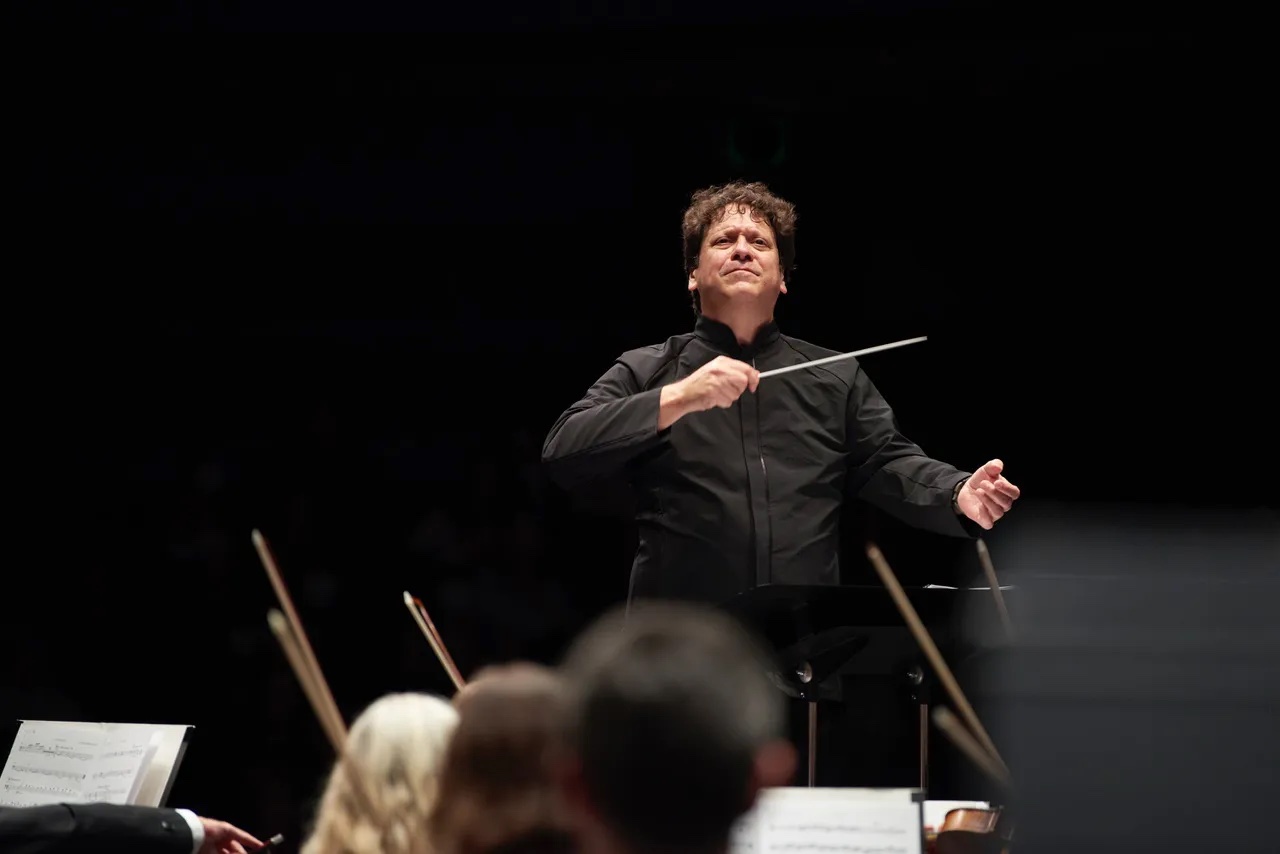Defining musical experiences in New York and the promise of the American Dream are dominant themes in the California Symphony’s upcoming “Gershwin in New York” concerts in Walnut Creek featuring Samuel Barber’s Symphony No. 1, William Dawson’s “Negro Folk Symphony” and George Gershwin’s “Rhapsody in Blue” on its centennial.
The snazzy, sultry “Rhapsody in Blue,” which debuted in a concert called “An Experiment in Modern Music” at New York’s Aeolian Hall on Feb. 12, 1924, is widely credited for ushering in the Jazz Age. On Jan. 27-28 at the Dean Lesher Center, the Marcus Roberts Trio—jazz pianist Marcus Roberts, drummer Jason Marsalis and bassist Marty Jaffe —joins the California Symphony for its modern interpretation of the famous opus.
“The Marcus Roberts Trio adds a little more of the jazz spices back into ‘Rhapsody in Blue,’ which has become such a staple, and Roberts freshens it up again and gives a new lease of life,” says California Symphony Music Director Donato Cabrera. “In the spirit of what Gershwin was paying respects to—this idea of freedom, experimentation and improvisation—works so well with ‘Rhapsody in Blue,’ and I’m so very excited to hear what Roberts does with the concerto from the Saturday night performance to the Sunday matinee.”

Barber’s Symphony No. 1, which opens the program, was written when the composer was 25, and although it premiered in Rome, its performance at New York’s Carnegie Hall on March 24, 1937—the year Gershwin died—was the event that heralded Barber as a new voice in American music. The work, which condenses the traditional four-movement format of a symphony into one rousing movement, was an evocation of the ominous clouds looming in the1930s with the Great Depression and World War II.
“I’ve been exploring the symphonies of that era that capture this angst,” Cabrera says. “And in the Barber I hear a lot of uncomfortable unease, a sense of foreboding that only art can truly capture—it’s like a time machine, and you get a real reflection of what society is feeling at the time.”
Dawson’s “Negro Folk Symphony,” a lush three-movement emotional tapestry inspired by the traditional spirituals for which the composer was known, made its debut at Carnegie Hall in November 1934 performed by the Philadelphia Orchestra with Leopold Stokowski conducting. Although it was a critical success and enjoyed brief popularity, it fell into obscurity—a fate often blamed on the prevailing racism of the era—and only recently has enjoyed a revival.
“I can’t think of a more profound American symphony,” Cabrera says of the Dawson piece. “There are other great American symphonies—Copland’s Third Symphony, for example—but with the Dawson, it’s a real personal take on spirituals, of the journey of an African American, and it’s all so perfectly embodied in this symphony.”
The pivotal performances of all three pieces in New York were examples of how the city was, and largely still is, the cultural capital of the United States. But they also exemplify how New York notably showcased various American Dreams: of having a successful career in whatever field one chose, or of immigrant and African-American stories.
“In the Gershwin, being perhaps the most famous American piece that we can call classical music, we have the story of this Tin Pan Alley composer striving to attain a sense of accomplishment in the music he loved, which was Western classical music,” Cabrera says. “This is also represented in the first symphony of Barber and this extraordinary piece that was almost lost to history in Dawson’s ‘Negro Folk Symphony.’”
California Symphony’s “Gershwin In New York” concerts are at 7:30 p.m. Jan 27 and 4 p.m. Jan. 28 at Dean Lesher Center for the Arts, 1601 Civic Drive, Walnut Creek. Tickets are $20-$96 at californiasymphony.org.
